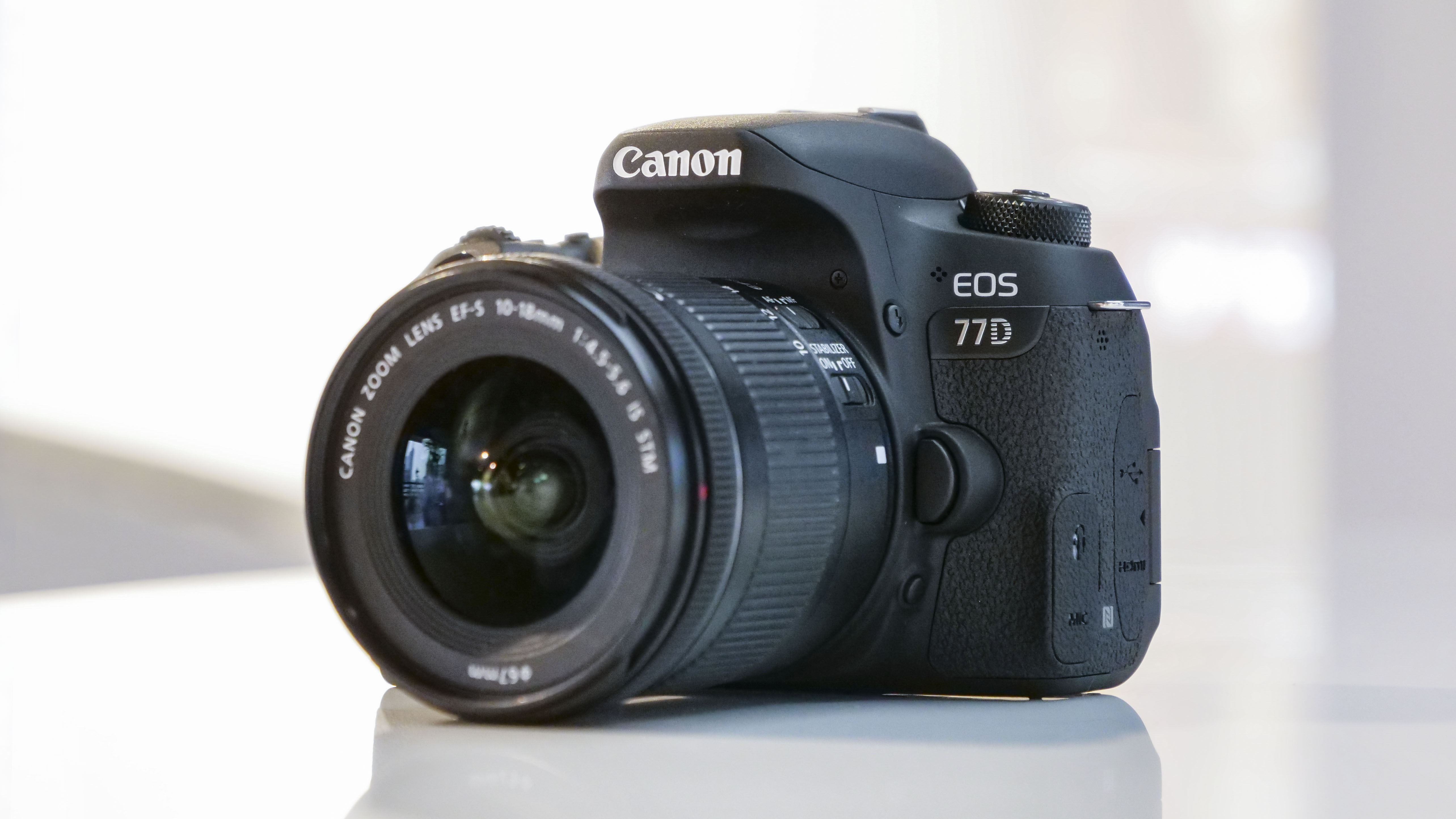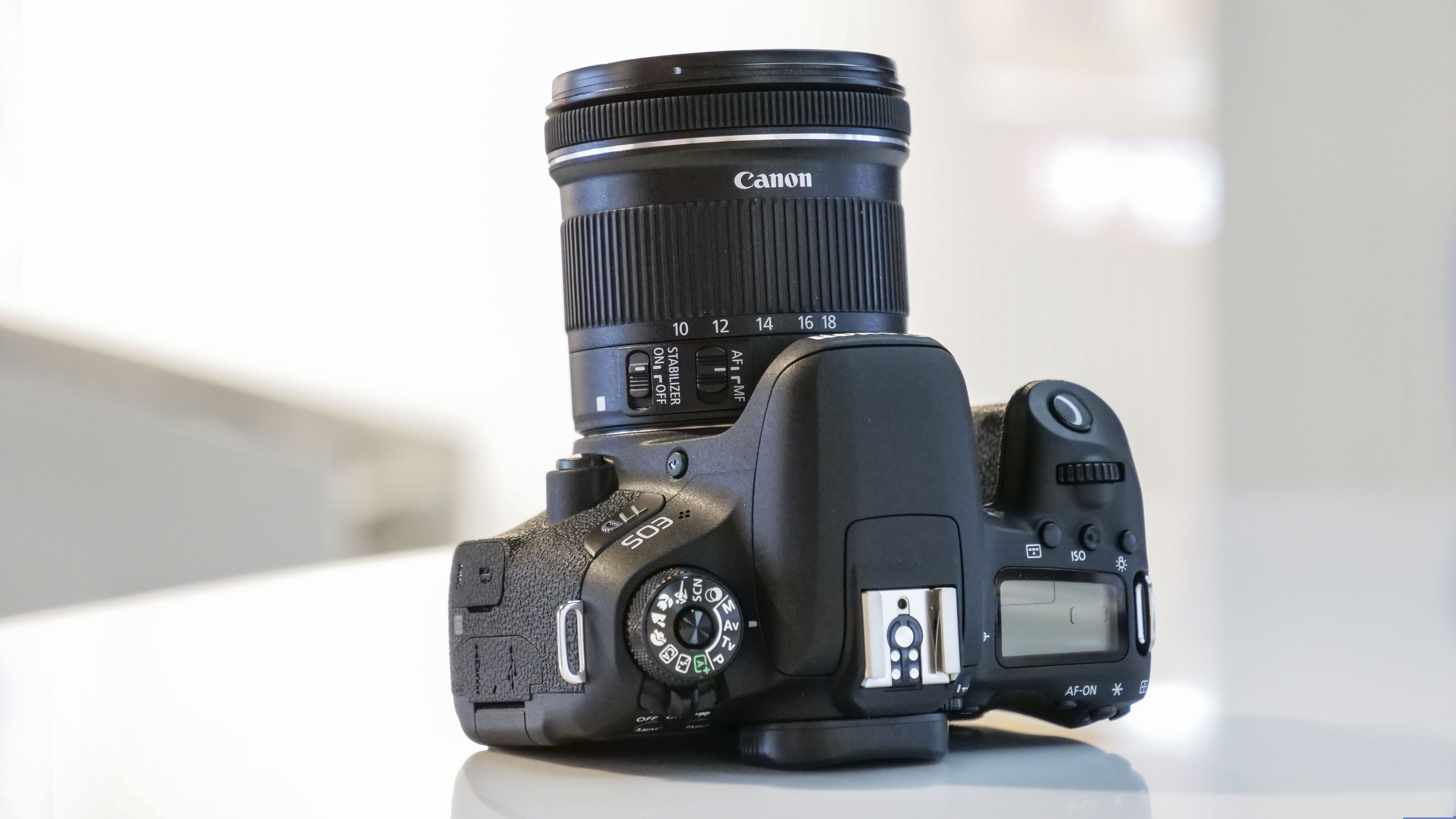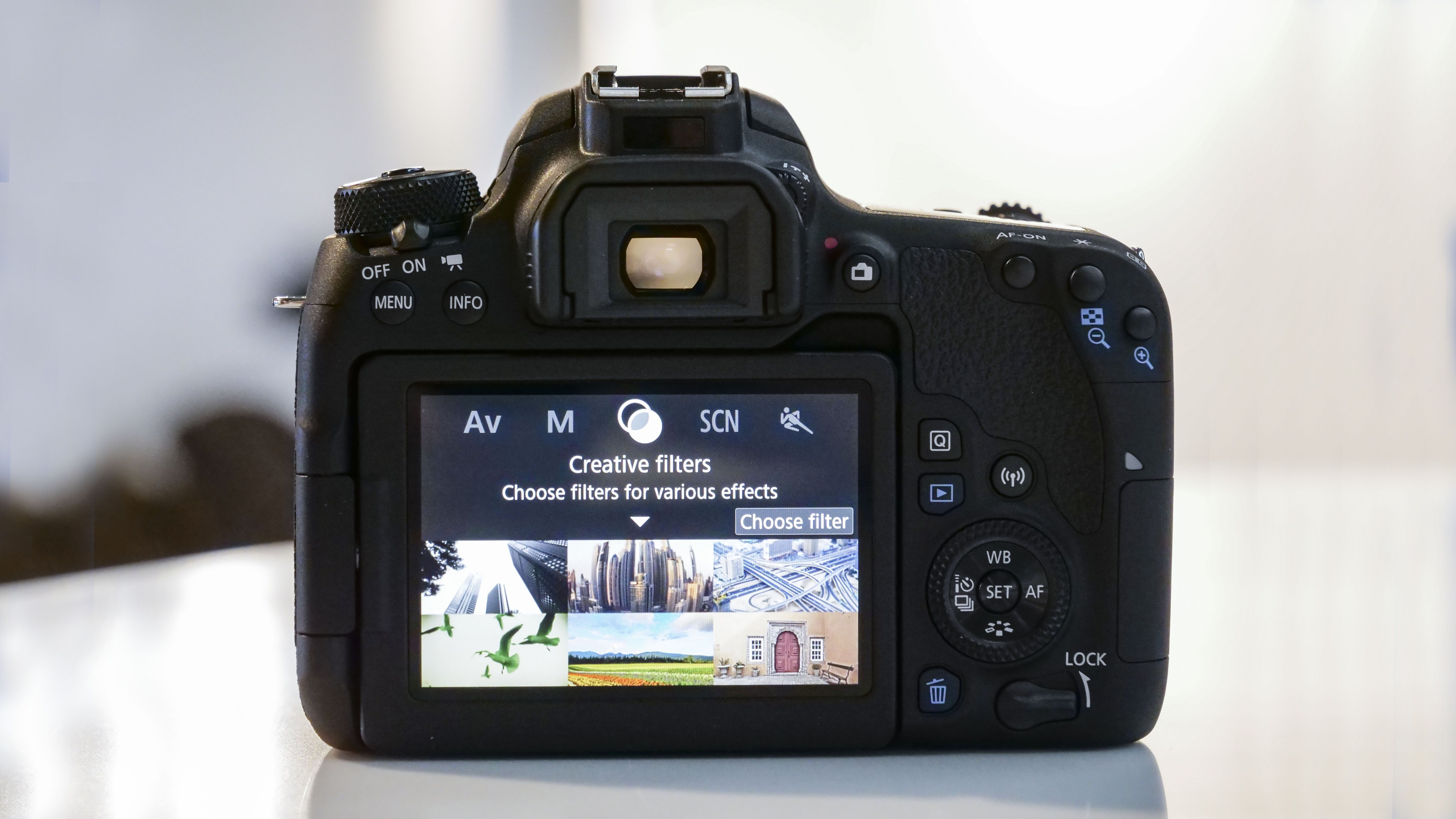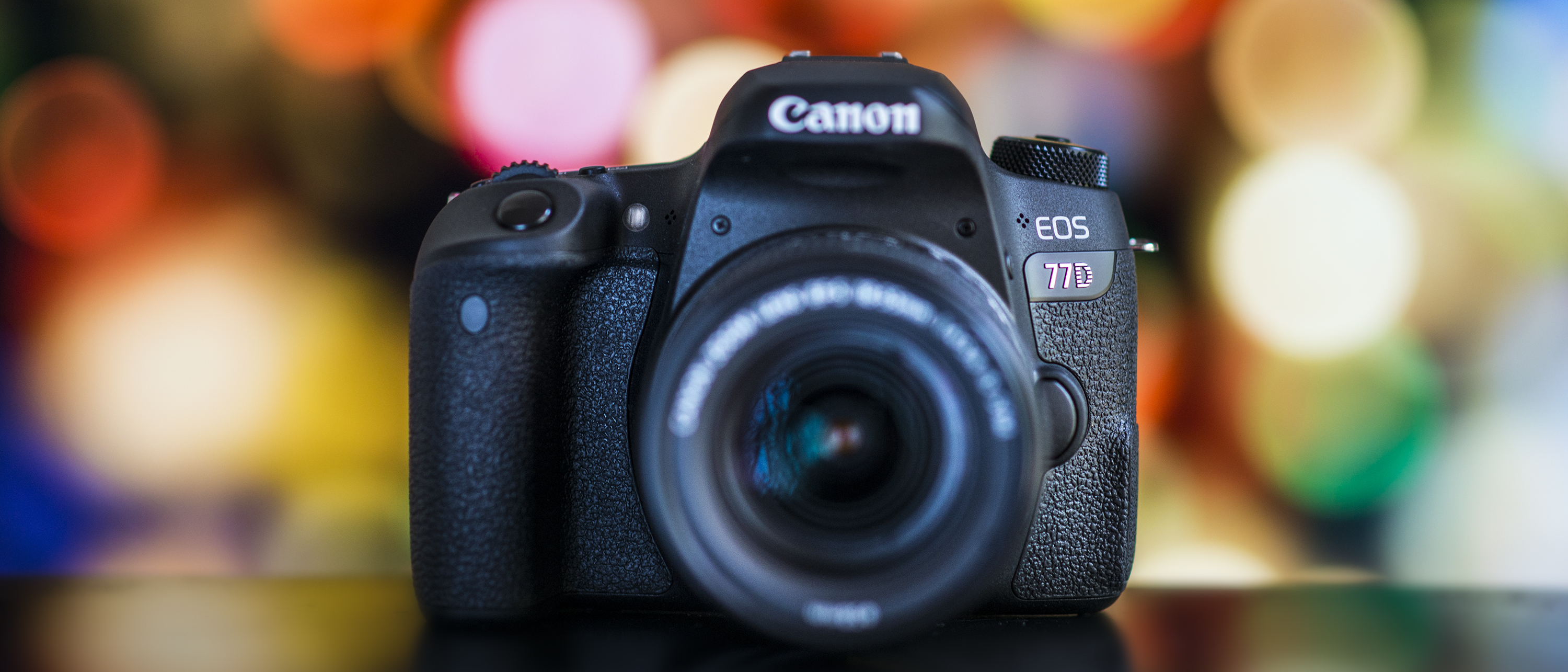TechRadar Verdict
The EOS 77D is a very capable DSLR, but it's a hard camera to get excited about. It does a lot of things well, but there's nothing that makes it stand out from the crowd. If you want an entry-level DSLR, the Canon EOS Rebel T7i / 800D is the one to go for, while those looking for something a bit more advanced should save their pennies for a bit longer and get the EOS 80D.
Pros
- +
Decent 45-point AF system
- +
Live view AF performance
- +
Touchscreen control
- +
AF-On button
- +
Excellent image quality
Cons
- -
No 4K video capture
- -
Plasticky finish
- -
Viewfinder only 95%
- -
Burst shooting speed
Why you can trust TechRadar
When Canon launched the entry-level EOS Rebel T6i / EOS 750D DSLR a couple of years ago, announced alongside it was the Rebel T6s / 760D.
While it was virtually identical to look at, and sported pretty much the same internal feature set, the T6s offered more body-mounted controls and a small LCD display, designed to appeal to more experienced users wanting more control.
Fast-forward two years and Canon has done the same thing again, launching the EOS 77D alongside the EOS Rebel T7i / EOS 800D.
Things are a little different this time though. The EOS 77D may share the same features as the T7i, but Canon has opted for a more distinctive and slightly larger design for the 77D to differentiate the two models.
Features
- APS-C CMOS Sensor, 24.2MP
- 3.0-inch vari-angle touchscreen, 1,040,000 dots
- 1080p video capture
Look under the skin of the EOS 77D and it's pretty much identical to the EOS Rebel T7i / EOS 800D. That means it gets the new 24.2MP APS-C CMOS sensor, which uses Canon's latest sensor technology.
This should mean it uses the same on-chip analogue-to-digital conversion technology we've seen on the likes of the EOS 5D Mark IV. If this is the case, it should produce cleaner images at higher ISOs compared to the older sensor in the Rebel T6i and T6s.
Sensor: 24.2MP APS-C CMOS
Lens mount: Canon EF-S
Screen: 3.0-inch vari-angle touchscreen, 1,040,000 dots
Burst shooting: 6fps
Autofocus: 45-point AF
Video: Full HD 1080p
Connectivity: Wi-Fi, NFC and Bluetooth
Battery life: 600 shots
Weight: 540g
Regardless of this, the EOS 77D promises to handle noise better at higher sensitivities thanks to the arrival of a new DIGIC 7 image processor, with a native ISO range of 100-25,600 that can be pushed another stop further to an ISO equivalent of 51,200 (you’ll have to dive into the menu to access this Hi setting). In addition, the DIGIC 7 chip is also said to improve AF performance over the DIGIC 6 processor.
Like the EOS Rebel T7i / 800D, the EOS 77D uses a 3.0-inch, vari-angle touchscreen display with a resolution of 1,040,000 dots. It’s a solidly specced screen, but perhaps a slightly larger 3.2-inch display, or a boost in resolution, would see it leapfrog rivals like the Nikon D5600.
It's also disappointing not to see 4K video on the EOS 77D, especially given Canon’s heritage in this area – as we've seen with mirrorless rivals like the Panasonic Lumix G80 / G85 and Fujifilm X-T20, 4K video is becoming an increasingly standard feature at this level.




Instead, you get Full HD capture up to 60p, while the EOS 77D also sports Canon's new 5-axis image stabilization system for shooting hand-held footage. This in-camera system is designed for videos only – Canon isn't ditching its lens-based IS system, but IS optics will be able to work in tandem with the in-camera system for video if you want.
The EOS 77D supports Wi-Fi and NFC connectivity, while there's also the option to set up a low-energy Bluetooth connection so you can always be connected to the camera. This enables you to remotely wake the camera from its sleep mode (provided you haven't turned the camera fully off), as well as browse photos and operate the camera remotely from your smart device.
Phil Hall is an experienced writer and editor having worked on some of the largest photography magazines in the UK, and now edit the photography channel of TechRadar, the UK's biggest tech website and one of the largest in the world. He has also worked on numerous commercial projects, including working with manufacturers like Nikon and Fujifilm on bespoke printed and online camera guides, as well as writing technique blogs and copy for the John Lewis Technology guide.

